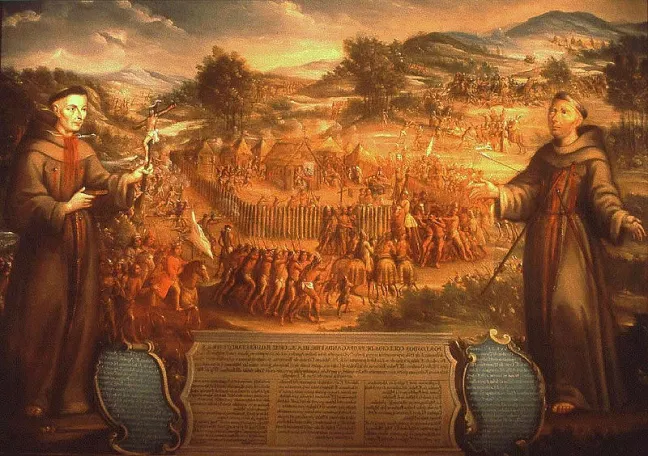San Saba Treasure - An Overview

There are many San Saba legends. One of the most popular legends was recounted by J. Frank Dobie in his 1930 book, Coronado’s Children. As recounted by Dobie, in 1868 Samuel Flemming (one of my ancestors) went with three other men, Wiley Stroud, Greenberry Ezell, and Col. Dixon, to the San Saba River, near where Menard, Texas sits today. They had a map from Mexico that led them from an old Spanish fort to an old mine shaft, the San Saba Mine. At the bottom of the mine shaft there was supposed to be several tons of silver bars. They found the old mine, but were not equipped to excavate it. Years later people did excavate it, but then the mine flooded, and it took decades before people managed to finally pump out the water. People worked at that same site, off and on, from 1868 to 1990.
In the 1700’s the Comanche and the Apache fought over the area and the Apache decided to side with the Spanish. They really had no choice as the French were supporting the Comanche with arms and horses. The Apache asked for a mission to be set up. They were not interested in a mission to live in, but they were interested in having a Spanish presidio, a fort, nearby to fend off the Comanche. So in 1757 the Spaniards set up a mission and presidio near where Menard, Texas sits today. A year later the Comanche, and other northern nations, destroyed the mission and murdered several Spaniards, including two priests. After holding out in the presidio for years, the Spaniards eventually withdrew back to San Antonio. That marked a turning point in the Spanish involvement in what is today Texas.
The image below is a painting that was made regarding the destruction of the mission in 1757. It is the first painting ever made of a historical event in Texas. It shows the two slain priests with the weapons by which they were martyred.
The massacre was one of many firsts. The first, and only, time a mission was completely destroyed. The first time that the Spanish troops were up against Native Americans who were armed with muskets and mounted on horses (the French supplied them with arms). Whereas before small numbers of Spanish troops could fight back large numbers of natives who were only armed with bow and arrow, the muskets and horses leveled the playing field. The Spanish were never again to be completely safe in Texas.
Shortly after the Spaniards abandoned the mission, rumors of silver mines in the area circulated in San Antonio. Stephen Austin included it on his maps of Texas. In 1831 Jim Bowie, of Alamo fame, went looking for it, and found an epic battle with a band of natives instead. Did he ever find the silver? Due to Bowie’s involvement it is sometimes called the “Lost Bowie Mine.” The Comanche dominated the area for more than a decade and it was not until German settlers, under the Fisher-Miller land grant, moved into the area that explorers again searched for the mines. Then 37 years after Jim Bowie had a go at it my ancestor went looking with three other men. Since then several groups of people have tried to locate the treasure. It is sometimes referred to as Los Almagres, but in my opinion that mine was a good distance to the east, in today’s Llano County.
In the twentieth century a number of interesting characters had a go at it: an electrician turned treasure hunter named William Longworth, a train engineer turned prominent San Antonio attorney named Julius Norton, and a pet shop owner turned vaudeville rattlesnake dancer named Martha “Wenonah” Learn. Those three died destitute, and one of them died under mysterious circumstances a stone’s throw from where my relative had dug 75 years earlier. It was only about 1990 when the digging finally stopped for good. The only thing ever found was limestone, only good for crushing into gravel.
Photo of painting curtosy of Dorthy Sloan Rare Books. It is with saddness that it was learned that Dorthy Sloan recently passed on.
David C Lewis wrote this article. His author page and a link to purchase his book on the San Saba Treasure is here